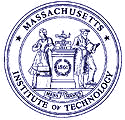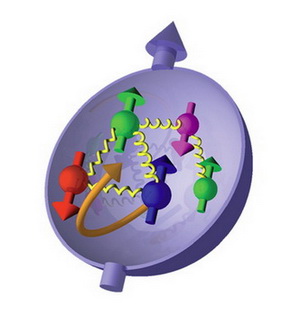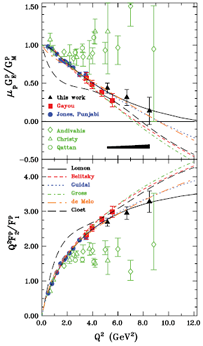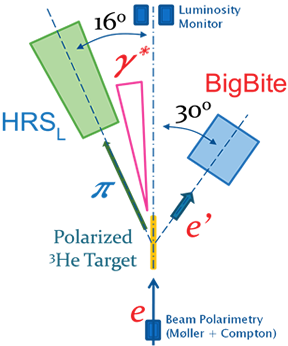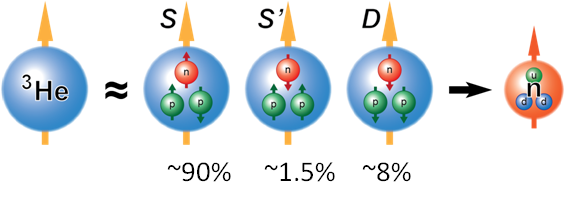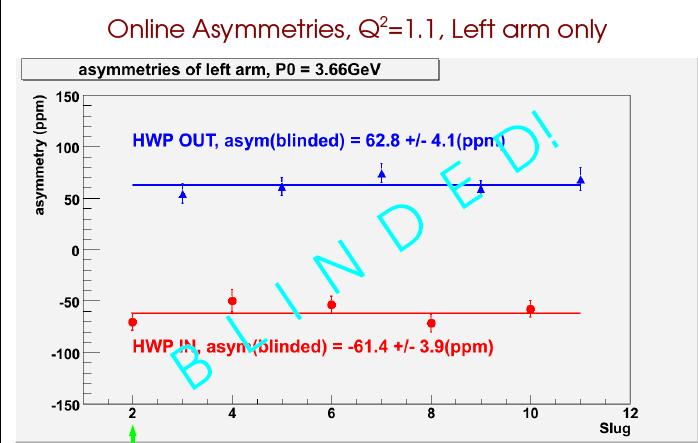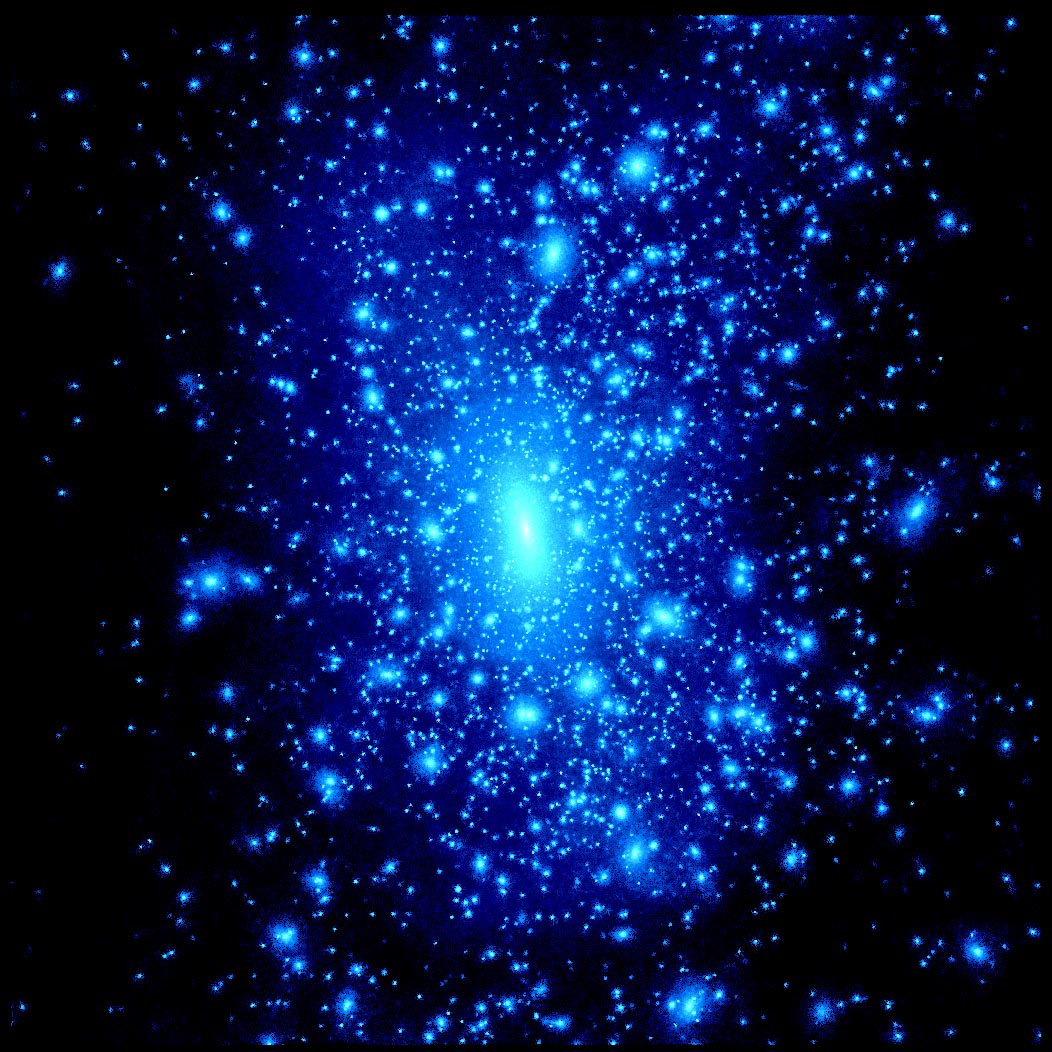LNS/NIG
Nuclear Interaction Group - Research Highlights, 2009~2011
At the Nuclear Interactions Group (NIG), we carry out our research at Bates, Mainz and JLab. We are sponsors of many experiments at these facilities and our group provides a great deal of the leadership for the programs. Our work includes substantial and novel facility development as part of a collaborative contribution. Among these world-class facilities, we get involved in the research at JLab most actively. Scientists from across the country and around the world visit the Thomas Jefferson National Accelerator Facility (JLab) to advance mankind's understanding of the atom's nucleus and thus of matter itself. Their tools for probing nuclei are: continuous beams of high-energy electrons from CEBAF - Jefferson Lab's unique Continuous Electron Beam Accelerator Facility - and the advanced particle-detection and ultra-high-speed-data acquisition equipment in CEBAF's three experimental halls. You can find more interesting stuff through Nuclear Physics at Jefferson Lab. We currently have three Ph.D. students in the NIG group who stay at JLab. Two of them already finished their thesis experiments at year 2009 and 2010, respectively. Another will run the experiment at year 2011. The major thrusts of our research program are:
Structure of the Nucleon: Static and Dynamic
|
An active program exists at JLab to study the dynamic structure of the nucleon by measuring the 3-dimentional relationships between the locations, momenta, angular momenta, and spins of quarks in nucleons. As one of the components of nucleon spin, quark's orbital angular momentum still remains largely unknown. Its existence could be demonstrated if g1T distribution function is non-zero. g1T, which describes the longitudinal polarization of quarks inside a transversely polarized nucleon, can be probed through a beam-target double spin asymmetry in semi-inclusive deep inelastic scattering with a longitudinally polarized lepton beam and a transversely polarized target. Such symmetry was measured for the first time with fast-helicity-flipping electron beam and a state-of-arts polarized He-3 target at Jefferson Lab experiment E06-010. When combined with world data, the new data will provide constraints on the g1T with quark flavor decomposition.Our student Jin Huang’s Ph.D. will be awarded in 2011 for a unique aspect of this research. After the upgrade, JLab will be an even better facility for such studies, and several experiments are already approved. |
|
Few-Body Nuclear Systems
|
Because they are calculable, the structure of and reactions with nuclei with few (2-4) nucleons provide a great testing ground for our understanding of nuclear physics. In addition, because free neutrons do not live long enough in nature, both 2H (deuteron) and 3He (helium-3) are used as neutron target in nuclear physics experiments. Understanding the effect of the nuclear environment on the neutron is thus very important. Our group has an on-going research program to study these topics with one experiment recently completed and one to take place in 2011. In addition, we are developing a research program using JLab's upgraded beam and detectors to study the EMC effect, which is related to the modification of the quark structure of nucleons embedded in nuclei as compared to that of free nucleons. |
|
Complex Nuclear Systems
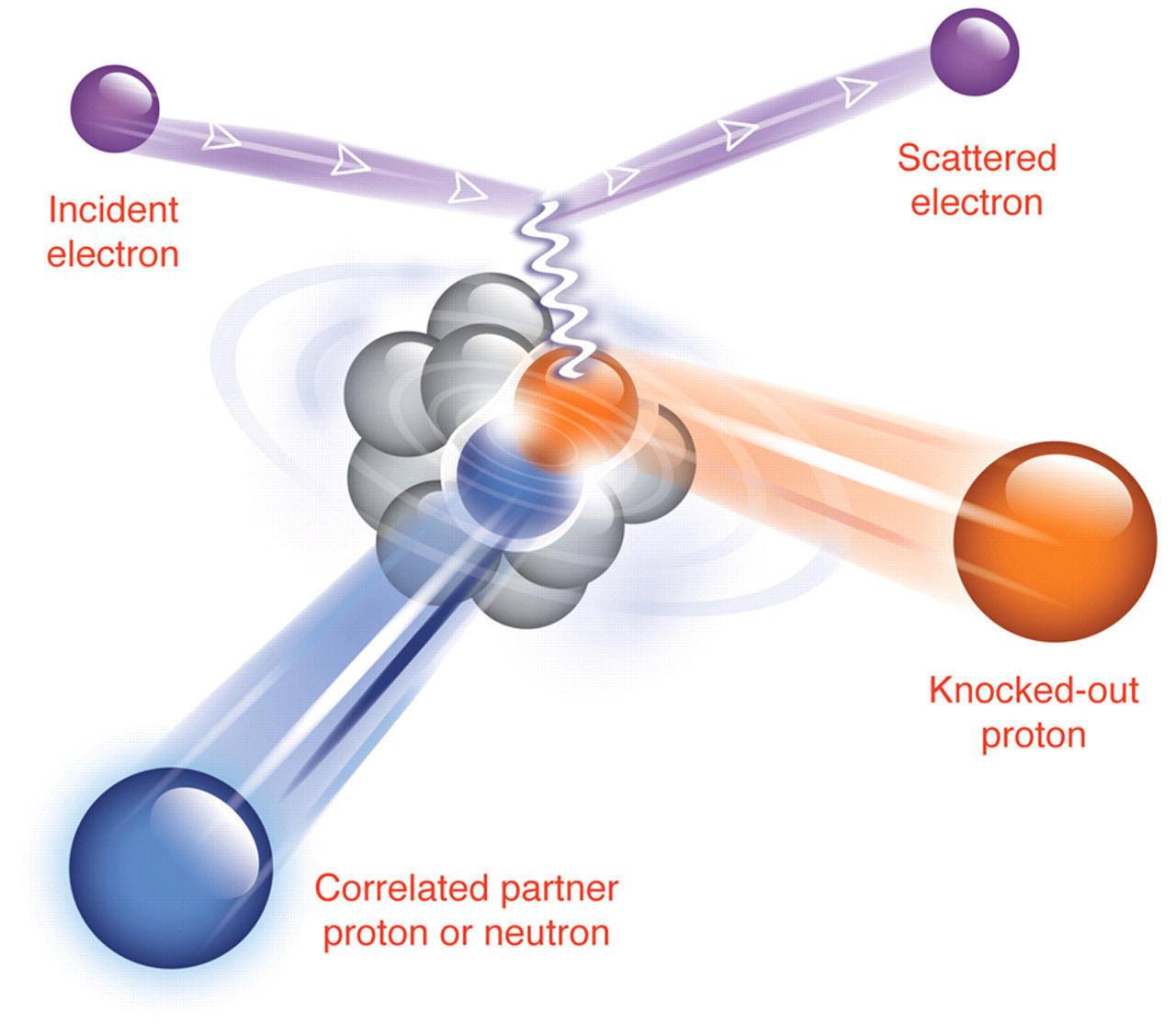 |
Our group has developed a program to study the poorly known part of the nuclear wave function where nucleons are in very close proximity to each other. Our recent measurement discovered that at such small distances, neutron-proton pairs are about 20 times more prevalent than proton-proton or neutron-neutron pairs, a manifestation of the tensor part of the nucleon-nucleon force. In 2011, we shall measure this ratio at even shorter distances, where the repulsive core of the nucleon-nucleon force may be manifested. This program will expand after the JLab upgrade to study the modification to the quark structure of nucleons, which are in very close proximity to other nucleons in nuclei. |
|
Our student, Navaphon Muangma, will run her thesis experiment E07-006 in the spring 2011. Experiment E07-006 will explore strongly overlapping nucleons in the nucleus -a phenomenon commonly konwn as short-range correlation- through the triple coincidence 4He(e,e'pN) reaction. The short-range correlation is responsible for the large momentum tail of the nucleons in the nucleus. In addition, this will lead us to the understanding of the cold dense nuclear systems such as neutron stars. The top figure depicts the interested reaction. They will select certain kinematics to minimize competing reactions. For example, high four-momentum transfer at [Q^2=2(Gev/c)^2] to minimize Meson Exchange Current (MEC); Bjorken x>1 to suppress isobar contribution; parallel kinematic to suppress Final-State Interactions (FSI). With both upgraded BigBite and Hall A Neutron Detector (HAND), they will achieve higher resolution and collect enough statistics to extract short-range correlation information to compare to the existing calculation. |
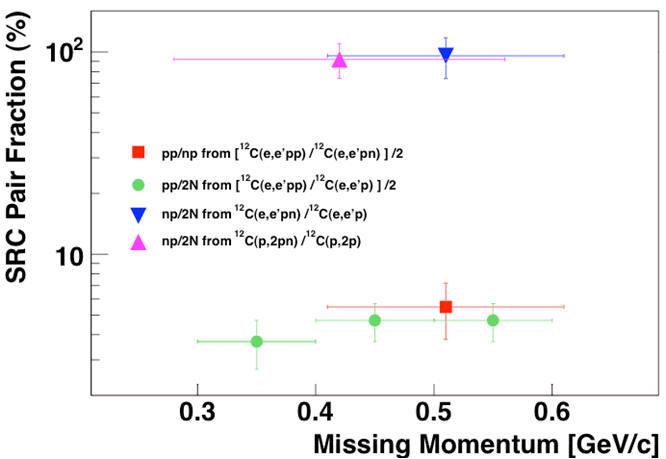
SRC pair fraction in 12C atom. The result from our previous SRC experiment E01-015. With the missing momentum range 300-600 MeV/c, the tension force play large role in existence of np pair over pp pair. |
Parity-Violating Scatting
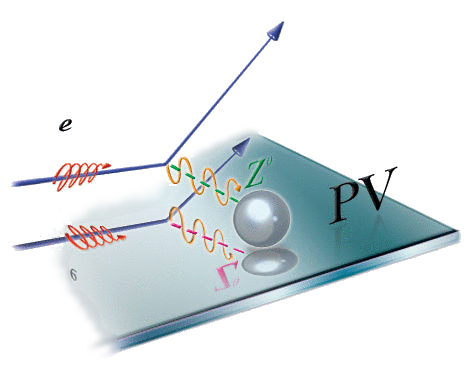 |
The measurement of parity-violating scatting from deuterium in the Deep Inelastic Scattering regime (PV-DIS) provides a unique sensitivity to the weak axial-vector coupling of the quarks, but also samples the underlying nucleonic structure of the target. A rich program of study is being designed for JLab-12GeV to explore both important topics in hadronic structure (i.e. coherent quark-quark correlations and charge symmetry violation at high momentum fraction) and potential variations from Standard Model expectations for the weak axial charge of the quarks. |
| Our student, Kai Pan, has measured the parity violating asymmetry Ad in electron-deuteron deep inelastic scattering experiment (E08-011 PVDIS) at Q^2=1.11 and 1.90 (GeV/c)^2 at x ≈ 0.3 at JLab Hall A in Nov. 2009. The combination of the two measurements will provide the first significant constraint on higher-twist (HT) effects in PVDIS at a level of 2.8%/Q^2. With HT effects thus measured, this experiment will constrain the poorly known effective weak coupling constant combination (2C2u − C2d). Precision measurements of all phenomenological couplings are essential to comprehensively search for possible physics beyond the Standard Model. The constraint on HT effects in PVDIS provided by this experiment will provide an important guide for the future PVDIS program with the 12GeV upgrade of which the ultimate goals are to study both the Electroweak Standard Model through extraction of the (2C2u − C2d) and various exciting hadronic physics phenomena including the charge symmetry violation and the parton distribution ratio d/u at large x. The plots on the right are the very preliminary blinded symmetry results at Q^2=1.11 (GeV/c)^2 . |
Parity violating (PV) asymmetries in electron-deuteron deep inelastic scattering (DIS) experiment (E08-011) at Q^2=1.1 (GeV/c)^2 (blined) |
Search of Dark Matter and Dark Force
|
|
Dark matter makes the majority of mass of the universe, yet it is not seen. One of the very new paradigms related to dark matter is that it interacts through a “dark force” that is carried by a newly postulated particle, X. In collaboration with Professors Milner and Fisher from LNS, we are involved in the development of a research proposal to search for the X boson. The experimental program that is being developed will modify the Free-Electron Laser at JLab, currently the most intense light source of its kind in the world, to make it ideally suited to our search. |

